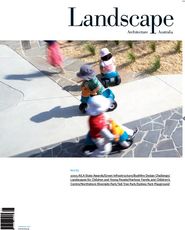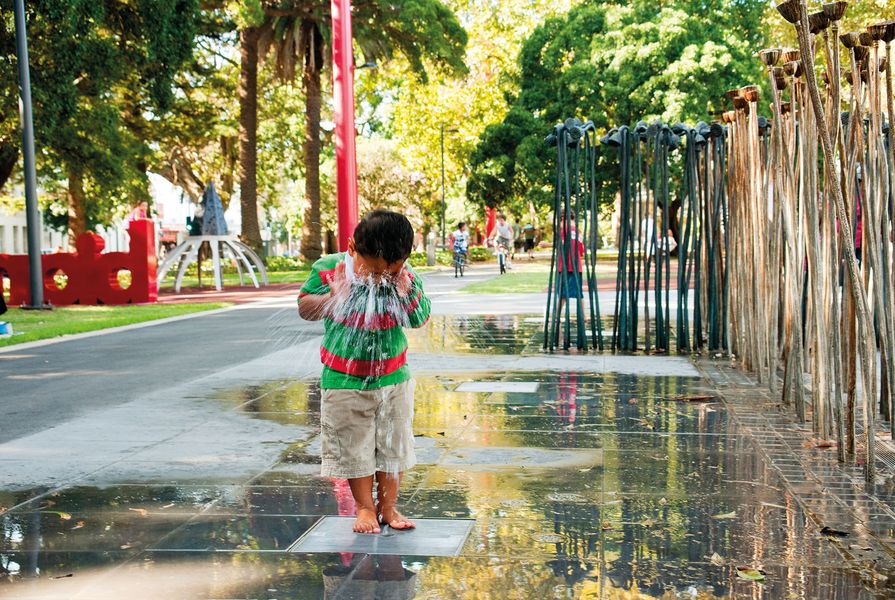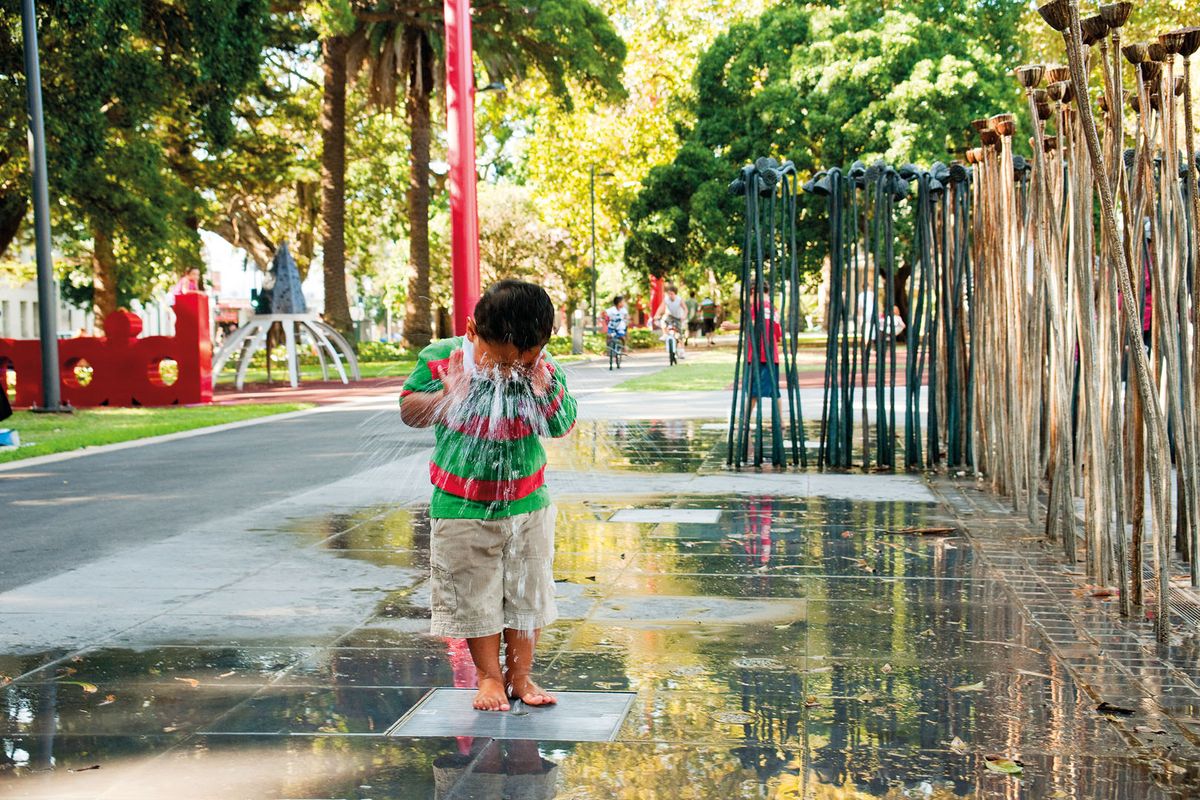Water play is perfectly suited to Australia’s climate and can be realized well without wasting or involving large volumes of water. Landscape architects and play space providers have a great opportunity to incorporate water play into public areas. Water play offers diverse ways to enrich public space with the beautiful properties of water, the sculptural appearance of water play equipment and the activation of plazas and squares that can result from well-designed play spaces.
Water play equipment differs from other types of dry play equipment in the way it appeals to people of all ages and genders. In a successful water play space, teenage boys will play alongside toddlers with older generations watching from the surrounding area, enjoying the spectacle that the people manipulating the water create. This activation and enjoyment by people of all ages is supplemented by increased social interaction, as many of the water play elements require teamwork in order for them to function properly. Water play is also highly desirable when incorporated into a dedicated play space, as it increases the range of play experiences available. Water play in play spaces is not new to Australia, and there are some highly successful water elements in many play spaces.
Water play can provide an incredible array of play experiences when designed and constructed well. It is crucial that designers have a thorough understanding of how water will flow through their designs and that they collaborate with hydraulic engineers or water-feature designers. Materials used to form the water play space need to be chosen with regard for non-slip and erosion resistance qualities. Providing adequate level change through the water play space to allow water to flow well is an important consideration. Water quality and public health issues need to be understood and catered for in the design process and the constructed system. The design needs to facilitate ease of maintenance and take into account that incorrect placement of water play equipment will result in items failing to work. Treated (chlorinated) water is likely to be required in systems where the water is to be reticulated and daily maintenance is essential to prevent disruption or damage to the hydraulic systems. Insufficient flow of water will also result in equipment not functioning properly and the appearance and water levels in water play spaces needs to be considered for times when no-one is actively using the equipment (shutting off the water overnight may be appropriate).
Water and water play equipment add a sculptural and decorative element to public space that other dry play elements generally do not. Thus, water play spaces can provide a high quality aesthetic and experiential addition to public areas.
Source

Practice
Published online: 8 Apr 2016
Words:
Kate Luckraft
Images:
John Gollings
Issue
Landscape Architecture Australia, February 2010












